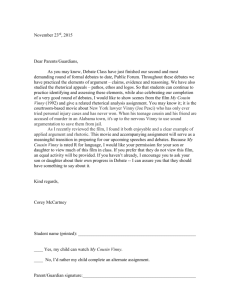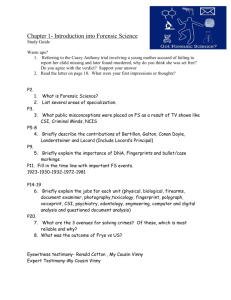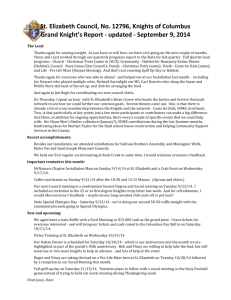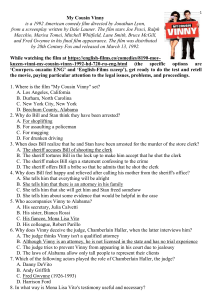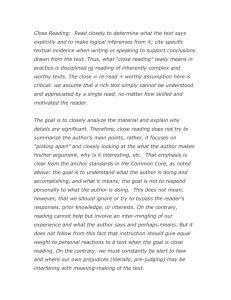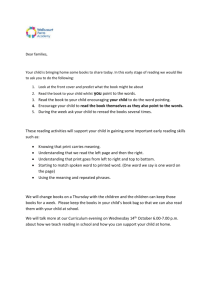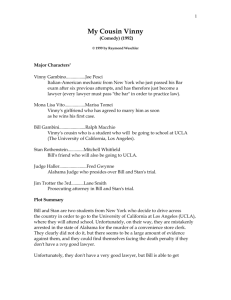The Ravine: Close Reading Guide
advertisement
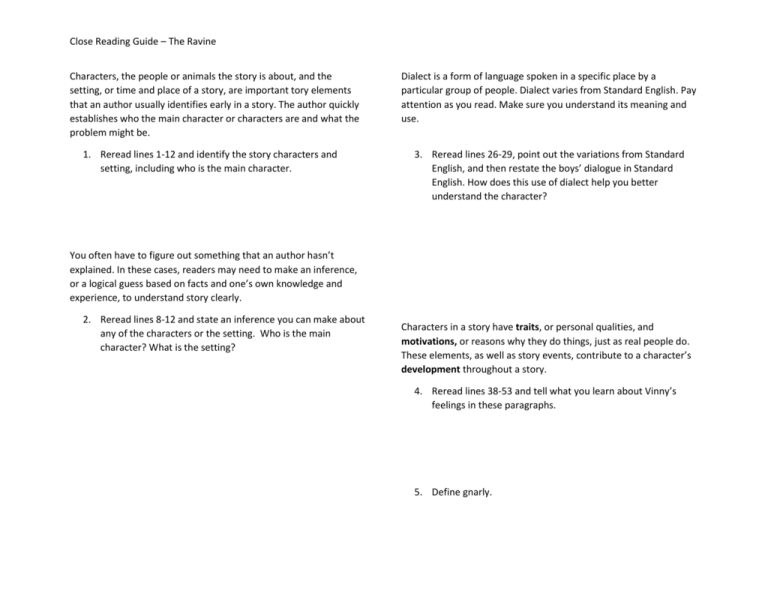
Close Reading Guide – The Ravine Characters, the people or animals the story is about, and the setting, or time and place of a story, are important tory elements that an author usually identifies early in a story. The author quickly establishes who the main character or characters are and what the problem might be. 1. Reread lines 1-12 and identify the story characters and setting, including who is the main character. Dialect is a form of language spoken in a specific place by a particular group of people. Dialect varies from Standard English. Pay attention as you read. Make sure you understand its meaning and use. 3. Reread lines 26-29, point out the variations from Standard English, and then restate the boys’ dialogue in Standard English. How does this use of dialect help you better understand the character? You often have to figure out something that an author hasn’t explained. In these cases, readers may need to make an inference, or a logical guess based on facts and one’s own knowledge and experience, to understand story clearly. 2. Reread lines 8-12 and state an inference you can make about any of the characters or the setting. Who is the main character? What is the setting? Characters in a story have traits, or personal qualities, and motivations, or reasons why they do things, just as real people do. These elements, as well as story events, contribute to a character’s development throughout a story. 4. Reread lines 38-53 and tell what you learn about Vinny’s feelings in these paragraphs. 5. Define gnarly. Close Reading Guide – The Ravine 6. What do you think a gnarly tree would look and feel like, and how does that description add to your idea about the setting and atmosphere of the story. You can learn much about a character’s personality from his or her actions and ideas. You can make inferences about a character’s traits by combining details from the story using your own knowledge and experience. 9. Review references to Starlene in lines 54-81 and then describe her personality based on what you find. 7. Authors often reveal character traits through a character’s reactions to other characters and their ideas. Reread lines 54-65, and tell what you think Vinny’s thoughts about the goddess reveal about him. Authors vary the length, structure, and pattern of sentences in their writing to create reader interest or emphasis, or to develop meaning. Authors use repetition, or repeated words or phrases, to create emphasis and drama. 10. Review lines 93-102, point out specific instances of sentence variations and repetition that create interest and drama. 8. Setting is often a factor that affects a character’s development. Write down words and phrases that indicate how the setting is making Vinny uneasy and afraid. Close Reading Guide – The Ravine Character development is how a character changes or becomes better known to the reader over the course of a story. 11. Reread lines 110-117, identify another conflict that is affecting Vinny, and describe what this tells you about Vinny’s personality. Traits are developed through the story for the main character. 13. Reread lines 153-157, tell me any new information that you have learned about Vinny. 14. Why would Vinny want to hug Starlene? Authors use repetition, or repeated words or phrases to create emphasis and drama in their writing. Repeated words can create a rhythm in language that propels the reader forward through the text. 12. Reread lines 147-152, point out specific instances of repetition. What effect does this repetition have? Authors develop characters in a story by using actions and words. 15. Explain Vinny’s idea that “It was asking for it” as a reaction to Starlene’s jump. Close Reading Guide – The Ravine 16. In lines 189-197 describe Joe-Boy’s personality, using both his actions and Vinny’s reaction to them. The author uses dialogue to create authentic characters and to show a character’s traits and development in a story. 19. Read Starlene and Vinny’s conversation in lines 217-240. Summarize or retell in your own words, what factors Vinny has been worrying about. An author can use sensory details that appeal to your sense of sight, touch, smell, taste, and hearing to help readers get a clear picture of a story and it characters. A simile is a kind of descriptive language that compares two unlike things using the words like or as. 17. What sensory language, including similes does the author use in lines 212-216? Sometimes you need to use what the author writes as well as your own knowledge and experience to understand a character more deeply. 20. Using your experience, explain in a full sentence why Vinny has an urge to fly as he looks down into the ravine. 18. How does this help you picture Starlene and the pond more clearly? 21. Define rivulet. Close Reading Guide – The Ravine 22. Define cascade. One way authors develop characters is by describing thoughts and feelings the character has. 25. Define precipice. 26. Why would the author use precipice instead of edge or cliff? 23. Read lines 279 through 283 and then tell what these lines help explain about Vinny and his fears. 27. Using words in the book, also called text evidence, explain how you know after reading line 318 that Vinny will walk back down the trail and not jump. 24. Review lines 297-312. Will Vinny jump or walk back down and why?
